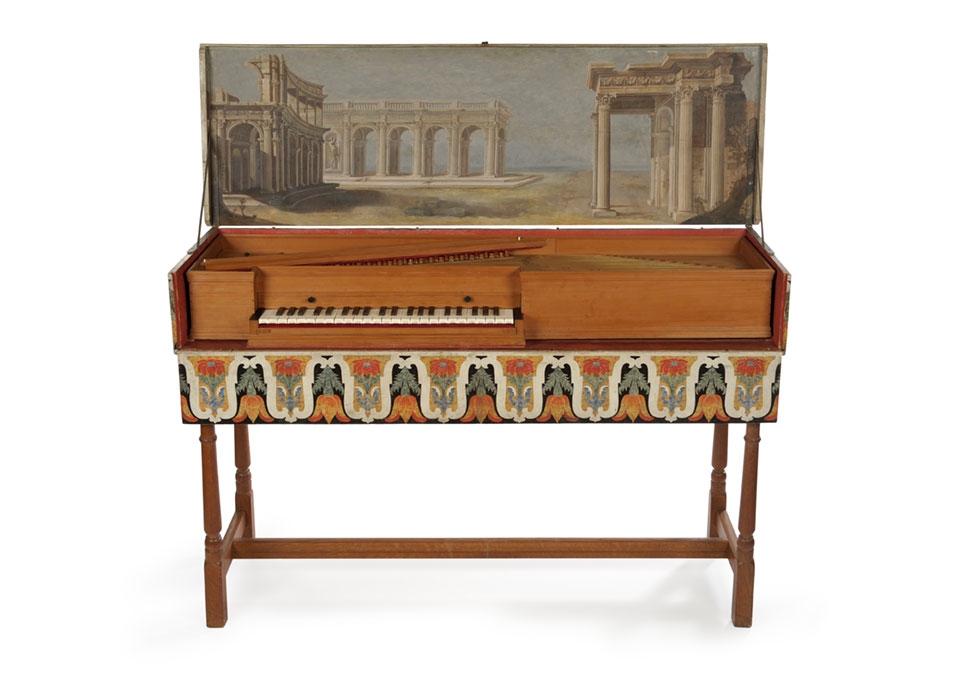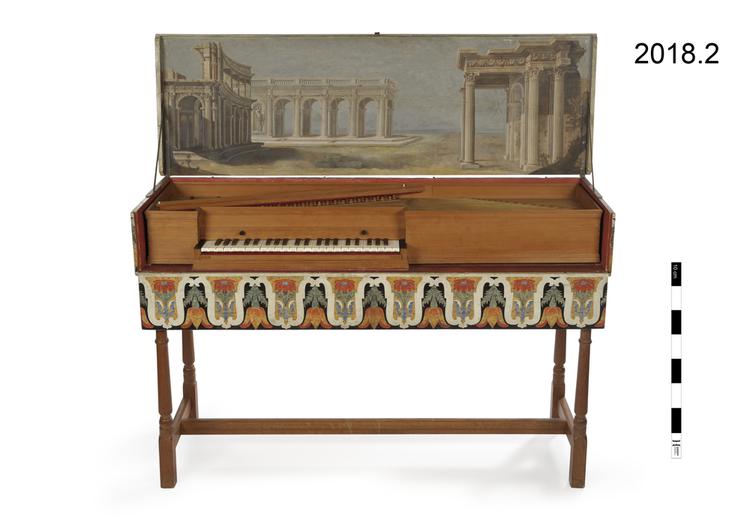This impressive Virginals in our collection has an interesting history of ownership.

It was once owned by Ellen Willmott, a gardener, horticulturalist and influential member of the Royal Horticultural Society (RHS).
Thinking about the past owner of an instrument, and especially imagining it being played, brings the instrument to life and reminds us that it has not always sat in our galleries. But who was Ellen Willmott?
Warley Place
Born into a family of keen gardeners, Ellen Willmott and her family moved into Warley Place in Essex in 1875. The family developed an alpine garden and a gorge, and on Ellen’s 21st birthday, she was allowed to create a rockery in the garden.
In 1888, Willmott’s godmother Countess Helen Tasker died and left her a huge inheritance, which she used to buy a property in France and develop the garden there. She later bought property in Italy too.
After the death of her father in 1892, Warley Place was solely hers and she continued to develop the gardens.

She employed over 100 gardeners to work alongside her on the estate but was known for being a demanding employer. She would sack people on the spot if she saw a weed left unpicked and only employed men, saying that ‘women would be a disaster in the border’.
Ellen’s gardening style was quite different to the ordered and patterned style that was popular at the time in Victorian Britain. Instead, she preferred more natural, ‘wild’ planting techniques; perhaps a reflection of the way that she also did not fit into the buttoned-up society of the Victorian-era.
Despite this, her garden at Warley Place was visited by Queen Mary, Queen Alexandra, and Princess Victoria.
Other work
Alongside developing her own gardens at Warley House, Ellen was commissioned by the Shakespeare Birthplace Trust to advise on garden design and planting at Anne Hathaway’s cottage in Stratford-upon-Avon. The planting she chose was based on the plants mentioned in Shakespeare’s plays, and many of her plant choices and their layout remain in place today.
Ellen was also a keen benefactor of plant exploration, funding expeditions to find new species unknown in the UK in return for access to the seeds and plants that were discovered. She is said to have cultivated more than 100,000 species and cultivars of plants, many of which are named after her. Some of these include:
- Willmott’s willmottiae and warleyensis cultivars such as Veronica prostrata ‘Warley Blue’,
- Ceratostigma willmottianum,
- Aethionema ‘Warley Hybrid’,
- Potentilla nepalensis‘ Miss Willmott’,
- Campanula pusilla ‘Miss Willmott’,
- Syringa vulgar

Ellen was a keen photographer and in 1909 she published a book of her photos of her garden. She experimented with different processes and colour photography.
A broken heart
Perhaps the greatest achievement of her career was being nominated for a Victoria Medal of Honour by the RHS. However, Ellen wasn’t at the awards ceremony – leading to much consternation. This was seen as a huge snub, but it seems the reason may have been matters of the heart.
To tell this story properly we need to jump forward to 2019. After Ellen’s death, her belongings were sent to her sister’s family home, Spetchley Park in Essex. In 2019, the house was due renovations so rooms were cleared out in anticipation of the works. Discovered in the basement, however, were those objects that had been sent to Spetchley Park in 1934.
These included, among other things, love letters between Ellen and a close friend, Georgiana ‘Gian’ Tufnell, lady-in-waiting to Princess Mary Adelaide.
The letters spanned three years, and tell a tale of yearning, love and closeness.
I love you so and you must know it in the same way that I know you love me. No time to tell you more, my dear heart, except that I want you very badly. I feel so lost without you.
One letter in particular explained Ellen’s absence from the RHS ceremony. In the face of Princess Mary Adelaide’s waning health and an uncertain future, Gian was to marry Lord Mount Stephen the day after the RHS ceremony. Faced with not only heartbreak but a disinclination to attend the wedding, Ellen fled to her house in France.
Sadly, we cannot know what Ellen said in her letters to Gian, as they were all burnt.
Bankruptcy and handbag guns
After this Ellen’s spending grew and grew, eventually leading to her having to sell many of her belongings and houses to keep Warley Place afloat.
She began carrying a gun in her handbag and booby-trapping her house against thieves. These things no doubt added to her image as a grumpy, slightly mysterious, garden-obsessed spinster. However, when you consider she was a woman living alone… perhaps these weren’t such crazy things to do after all.
This period of her life also saw the death of her sister Rose in 1922, at which time she reportedly said, ‘Now, there is no one to send the first snowdrops to’.
Ellen died in 1934. Her death came too early for the building and grounds to be covered by the RHS and National Trust joint Committee for Garden Conservation, so Warley Place fell into disrepair.
It is now managed by Essex Wildlife Trust and is run by a team of volunteers as a nature reserve.



